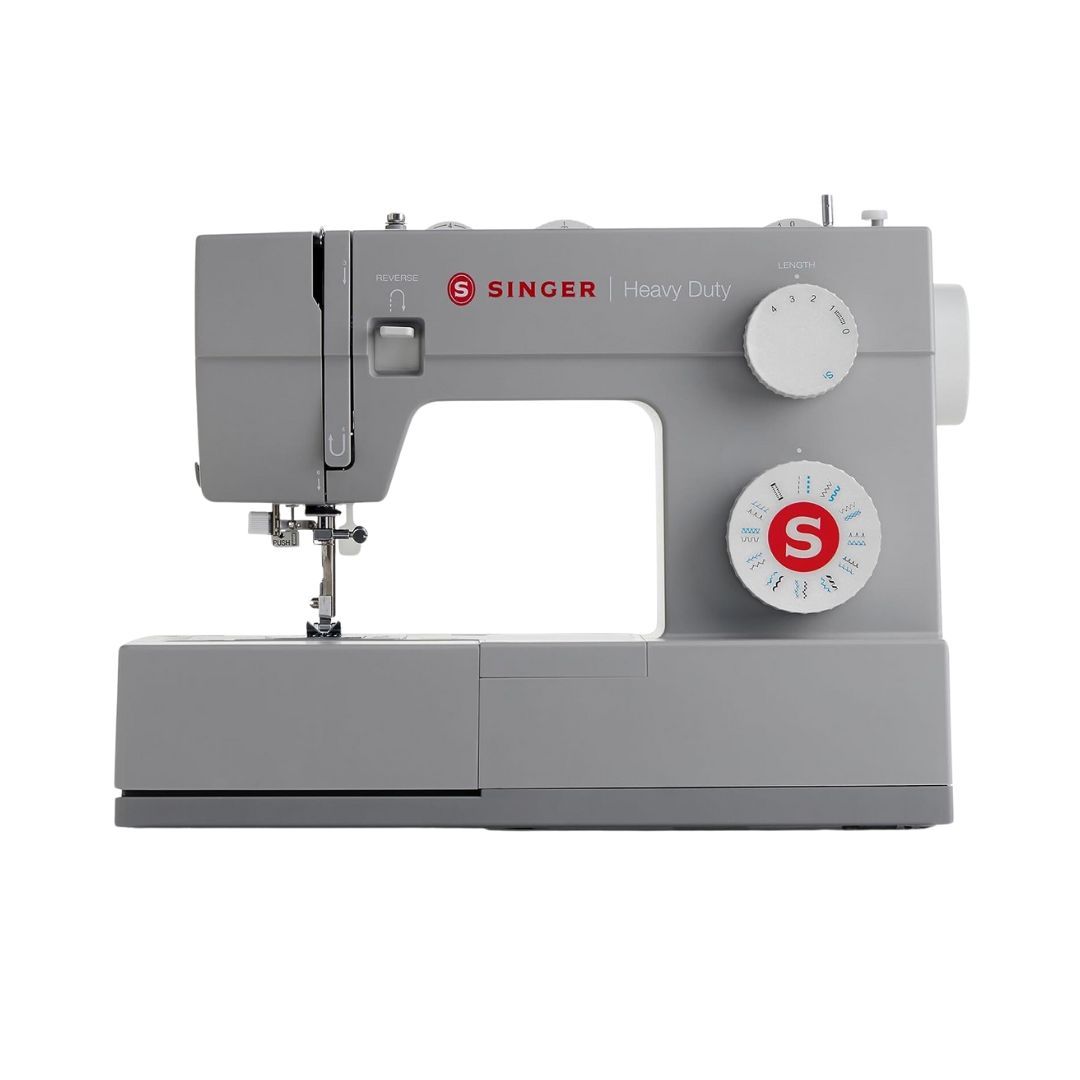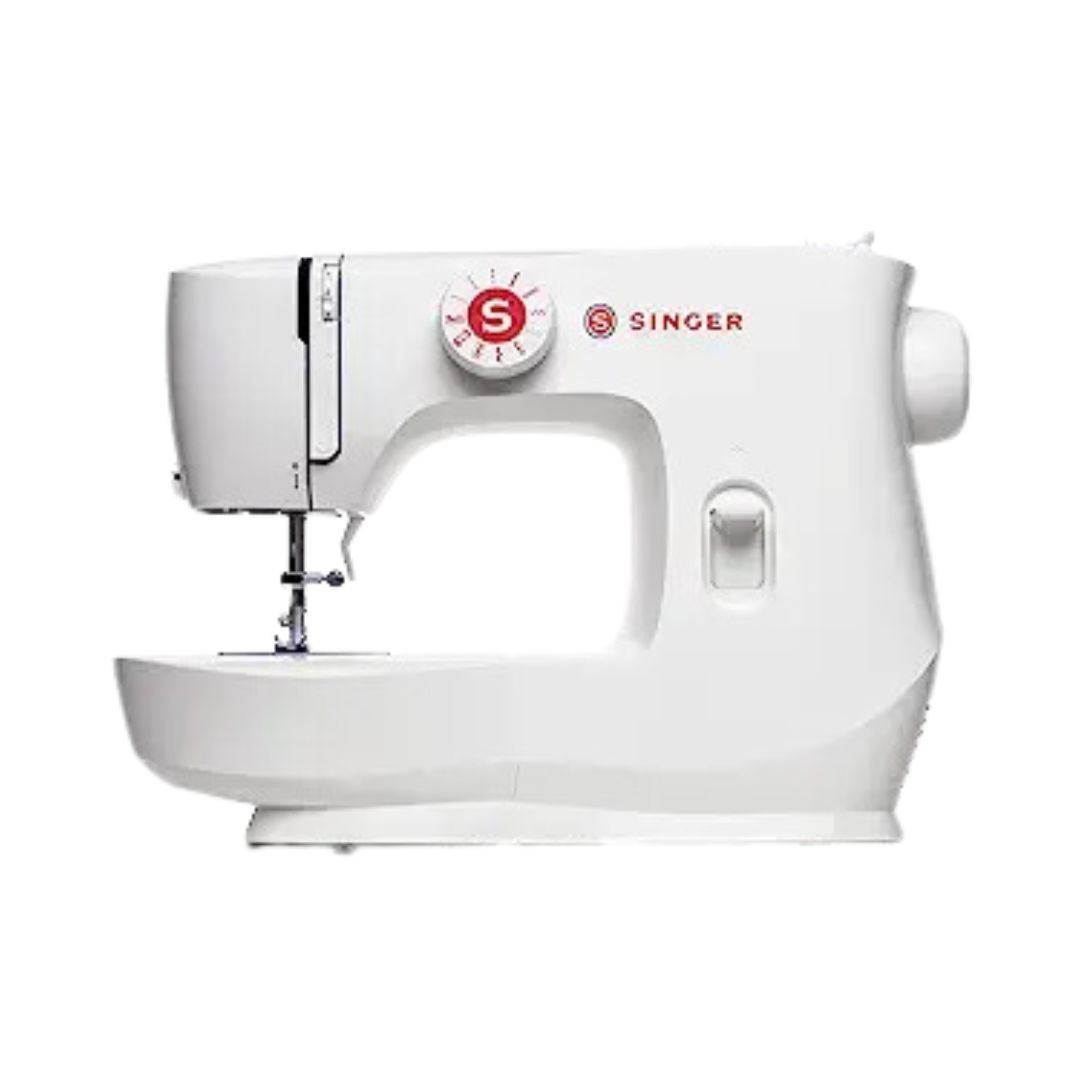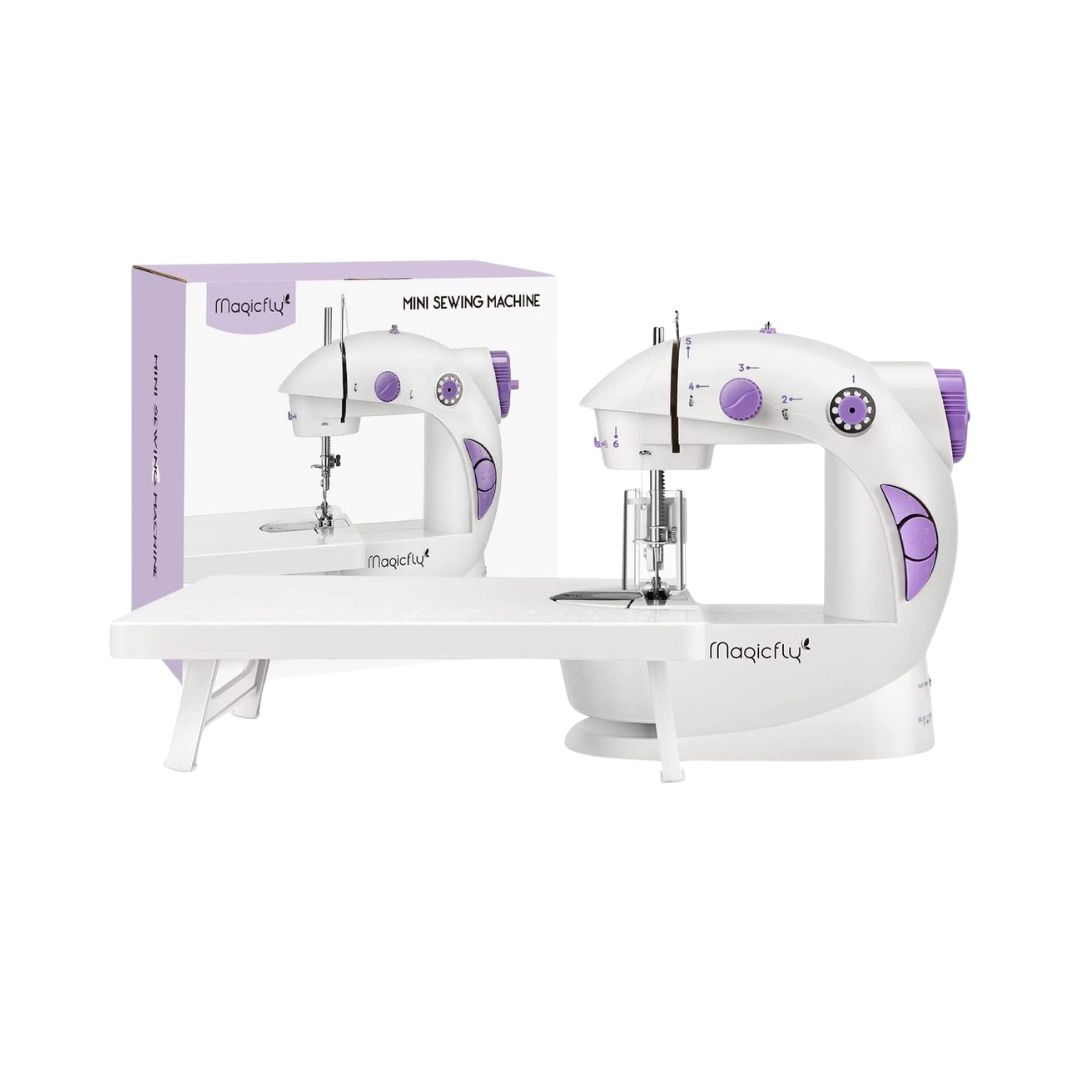We may be compensated if you purchase through links on our website. Our team is committed to delivering honest, objective, and independent reviews on home products and services.
Sewing machines help you step up your crafting game by giving you more capabilities than you have with hand sewing. Whether you are new to sewing or have years of experience, you’ll be able to find a machine that works for you in this review of Amazon’s best sewing machines. Keep reading for more information on our top picks and who they are good for.
Top 5 Sewing Machines
- Best Computerized Machine: Brother CS7000X Computerized Sewing and Quilting Machine
- Best Instructions: Brother GX37 Sewing Machine
- Best Speed: SINGER 4423 Sewing Machine
- Best Basic Machine: SINGER Mechanical MX60 Sewing Machine
- Best Value: Magicfly Mini Sewing Machin
Best Computerized Machine
Key Features
- Automatic needle threader
- Electric
- 70 built-in stitches
- LCD screen
- Button selection
- 18.96 pounds
- 25-year warranty
- A wide table, 10 sewing feet, a hard protective case, a quilt guide, a user manual, and more included
What Customers Are Saying
Positive reviews praised this Brother sewing machine because it made sewing clothing easy and quick. Many reviewers also liked the built-in stitches, LCD screen, and built-in free arm. Critics said that this computerized sewing machine didn’t work well for making large quilts or sewing through thicker fabrics.
Best Instructions
Key Features
- Automatic needle threader
- Treadle-powered
- 37 built-in stitches
- Dial selection
- 15.4 pounds
- 25-year warranty
- Six sewing feet, a needle set, a bobbin set, an instructional DVD, a manual, and more included
What Customers Are Saying
Customers praised this machine for its helpful instructional DVD and easy-to-use foot pedal. Other positive reviews noted that the sewing machine had a strong sewing needle. Dissatisfied customers said that its light wasn’t bright enough and that its motor seized up within a short period of time.
Best Speed
Key Features
- Automatic needle threader
- Treadle-powered
- 23 built-in stitches
- Dial selection
- 14.5 pounds
- 25-year warranty
- A lint brush, a quilting guide, a set of needles, a set of bobbins, a screwdriver, a spool pin, an accessory tray, and more included
What Customers Are Saying
Positive reviews raved about this sewing machine’s ability to sew through multiple layers of fabric or dense fabric, such as denim and leather. Other reviews noted its drop-in bobbin. Negative reviews said that its motor was noisy and its automatic needle threader was difficult to use.
Best Basic Machine
Key Features
- Electric
- Six built-in stitches
- Dial selection
- 12.72 pounds
What Customers Are Saying
Positive reviews praised this sewing machine for its simple built-in stitches and affordable price. However, some customers didn’t receive an instructions manual, which made setting up and using their machine more difficult.
Best Value
Key Features
- Electric
- One built-in stitch
- Dial and button selection
- 3.65 pounds
- Three color options
- A 42-piece sewing kit, an extension table, a dustproof bag, and more included
What Customers Are Saying
Satisfied customers highlighted this sewing machine’s small size. Many also said that it was easy to use, especially for beginners who wanted to learn about the basics of sewing. Negative reviews pointed out that this machine wasn’t durable and that it couldn’t sew thick materials.
Buyer’s Guide
Read our guide below if you’re new to sewing and want to know what factors to consider before buying a sewing machine.
Machine Type
Sewing machines are either mechanical or computerized.
- Mechanical: Mechanical sewing machines have knobs that allow customers to adjust their settings. They’re easier to use and more affordable than computerized machines, but they don’t produce precise stitching and don’t have complex embroidery functions.
- Computerized: Computerized machines are more expensive than mechanical sewing machines because they have a variety of built-in stitches and can create complex designs.
Stitch Type
Each machine has a certain number of stitches it can perform. Here are a few of the most common stitches that your machine should be able to do:
- Straight: This is the most common type of stitch. With this stitch, the needle and thread move forward in a straight line, while the machine feeds fabric toward you.
- Zigzag: This is another foundational stitch that creates a zigzag pattern.
- Lock: This type of stitch locks in the stitches you’ve already done. The first type of lock stitch sews backward over a line of stitches to create a backstitch at the beginning and end of a seam. The machine will either automatically do this for you or have a lever you can pull to go in reverse. The second type of lock stitch creates a nearly invisible knot at the beginning and end of a seam.
- Buttonhole: This type of stitch sews buttons onto fabric. It can be a difficult stitch to make because the button has to be in the right place, and its top, bottom, and sides have to be reinforced. You can remove some of the guesswork by finding a machine that has an automatic buttonhole option that performs a series of pre-programmed stitches for you.
- Overlock: An overlock stitch secures loose seams like a zigzag stitch can, but it produces more of a polished look.
- Decorative/embroidery: Sewing isn’t just functional—it can also be used to give your clothes, pillows, quilts, and other belongings a decorative look. If you’re a more advanced sewer, your machine should be able to perform decorative or embroidery stitches, such as the crescent stitch.
Adjustment
Your machine should allow you to adjust the length, width, and tension of its stitches depending on the type of material you’re sewing.
Ease of Use
Sewing is a difficult task that requires attention to detail. To make sewing easier, look for a machine that has features, such as a drop-in bobbin, an automatic bobbin threader, and an automatic needle threader, to cut down on potential errors.
Speed
The speed of a sewing machine is measured in stitches per minute. You can control a machine’s speed with a foot pedal or variable speed control. Older mechanical machines have a foot pedal that increases the speed of the machine when you put pressure on the pedal. However, these pedals tend to be sensitive, making it difficult to control how fast you’re going. Newer computerized machines have a slider that allows you to select the speed you want.
Accessories
Some sewing machines come with accessories to help with operation, such as a carrying case, extension table, set of needles, and seam ripper.
Frequently Asked Questions
What is a bobbin?
A bobbin is a metal, wooden, or plastic reel that holds thread. It can hold this thread to store it when it’s not in use or feed it through a compatible sewing machine.
What is an automatic needle threader?
A sewing machine with an automatic needle threader has a lever that guides the thread through the eye of your needle so that you don’t have to do it by hand.
How do I get my sewing machine serviced?
You can perform general maintenance tasks, such as oiling the moving parts and cleaning out lint, on your own. However, sewing machines are complex and require an occasional checkup by a professional to ensure that all of its parts are running smoothly. Most sewing stores will have professionals on hand to perform routine servicing. We recommend getting your machine serviced every 12-18 months.
Why Trust The This Old House Team
This Old House has empowered homeowners for more than four decades with top-notch home improvement content in the form of television programs, print media, and digital content on its website and social media platforms. The This Old House Team focuses on creating in-depth product and service review content to help inform your purchasing decision for just about any item or resource that you might need for your home. The This Old House Team has written over 1,000 reviews on products in the home space, from cordless drills to kitchen trash cans, lawn mowers, and dining room decorations.
We recommend products in each review using an intensive research process, spending hours combing through the best available models on Amazon. For a product to make our list of top picks, it must hold a solid sales record on Amazon, have consistently positive customer reviews, and offer unique features, among other factors. After narrowing down our list of recommendations, we conduct additional research and sometimes in-person testing to ensure that the products meet our standards. Once we conclude the research phase, we craft a well-rounded, user-friendly article that includes our recommended products and additional information to help homeowners like you make the right purchase.
To share feedback or ask a question about this article, send a note to our team at reviews@thisoldhousereviews.com.





